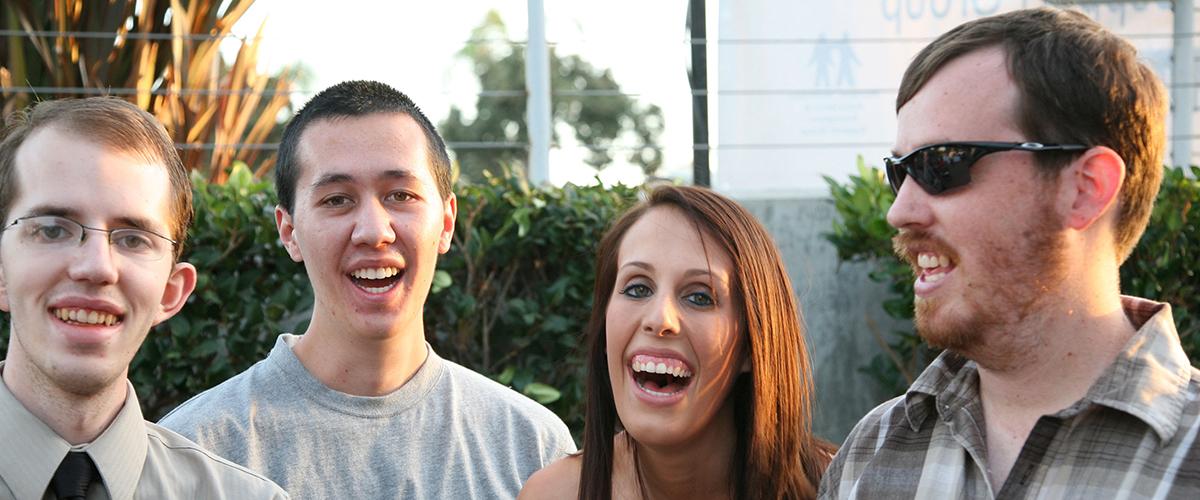In partnership, the Myotonic Dystrophy Foundation US and the Myotonic Dystrophy Foundation UK made the following Research Fellowship grants in 2021:
Kamyra Simone Edokpolor
Emory University School of Medicine, Atlanta, Georgia, US
A lesser known and understudied symptom of DM1 patients is an increased risk of surgical complications associated with general anesthesia. Many patients fear medical procedures that involve general anesthesia, given that in the most severe cases, complications during the recovery period result in fatalities. Unfortunately, the molecular mechanisms underlying adverse responses to anesthesia in DM1 remain largely unknown. Anesthetics induce and maintain the quiescent state by increasing the production and circulation of the inhibitory neurotransmitter, GABA, throughout the brain, suggesting an enhanced inhibitory mechanism could underlie delayed recovery in DM1. Overall, the goal of the project “MBNL2 Dependent Dysregulation of GABAARs: Implications for CNS Symptoms in Myotonic Dystrophy Type 1” is to reveal new insights into how an RNA mis-splicing event may impact GABA and also interrogate the global effects of MBNL2 on GABA. Identifying how GABA receptors are primarily involved in this pervasive symptom will potentially provide new drug targets to improve DM1 patient care. Learn more about Kamyra Edokpolor's work.
Maya Gosztyla
University of California, San Diego, California, US
Maya Gosztyla’s project “Investigating RNA-binding Proteins and RNA Localization in cDM1 Organoids” plans to search for new RBPs, beyond those currently known, that are dysregulated in DM1. They will conduct this analysis using cerebral organoids, which mimic the cells and structure of the human brain using spherical clumps of cells grown in a dish. They will also investigate whether incorrect localization of RNAs within each cell, rather than incorrect RNA processing, contributes to DM1’s cognitive symptoms. These experiments will provide important insights into how DM1 affects the brain and provide new avenues for developing treatments that address its cognitive symptoms. Read more about Maya Gosztlya's work.
Rong-Chi Hu
Baylor College of Medicine, Houston, Texas, US
Rong-Chi Hu's project “Mechanisms of DM1 Cardiac Pathogenesis and Potential Therapeutics” will utilize a mouse model developed in the sponsor’s lab to determine the degree to which different molecular mechanisms contribute to DM1 cardiac pathogenesis and to test two different CRISPR-based therapeutic strategies to decrease the expression of CUG repeat RNA in the heart. The completion of this proposal will bring insights into the molecular details of heart pathogenesis and downstream consequences on heart function in DM1, as well as expand upon the limited therapeutic approaches for cardiac aspects of DM1. Read more about Rong-Chi Hu's work.
Benjamin M. Kidd
University of Florida, Gainesville, Florida, US
DM affects many different tissues throughout the body resulting in muscle wasting, gastro-intestinal problems, sleeping issues, and wide-spread reduction of brain volume. While research studies have focused on disease mechanisms involved in skeletal muscle wasting in this disease, our understanding of the molecular events that lead to this brain loss, or cerebral atrophy, and associated neurological symptoms remain unclear. To address this critical issue, the project “Brain Choroid Plexus Dysregulation and Cerebral Atrophy in DM1” will use several mouse genetic models of DM1 to test the hypothesis that the DM1 mutation has its most profound deleterious effects on a specific cell type in the brain, choroid plexus epithelial cells, which produce the cerebrospinal fluid vital for brain health. Importantly, these cells function in the transport of nutrients into, and the clearance of potentially toxic by-products from, the brain. The goal of the project is to identify novel and accessible cell targets and pathways for effective myotonic dystrophy therapies. Learn more about Benjamin Kidd's work.
Subodh Kumar Mishra, PhD
The RNA Institute, University of Albany, New York, US
Despite the significant knowledge about the complex pathogenic mechanisms, there are currently no disease targeting FDA-approved treatments for DM. This project identified Centaureidin and four more dietary flavonoids (DFs) that selectively reduce the DM expansion RNA abundance and rescue mis-splicing with negligible toxicity. Due to their excellent safety profile, DFs are well tolerated and often used as dietary supplements. The study “Discovery of Dietary Natural Compounds as Potential Therapeutics for Myotonic Dystrophy (DM)” proposes two main aims; i) assessing the therapeutic potential of these DFs for the promising treatment of DM, and ii) determining their mechanism of action (MOA). The overall goal is to identify new potential therapeutic compounds for DM patients that can reduce or lower the levels of toxic CUG/CCUG RNA abundance with a negligible or manageable toxicity profile. Learn more about Dr. Mishra's work.

